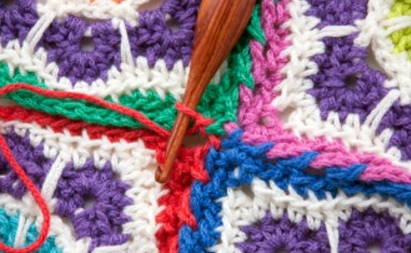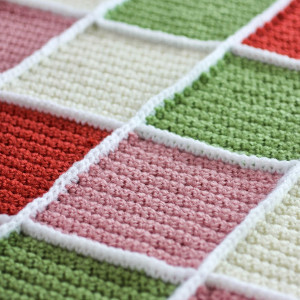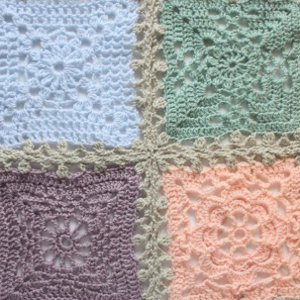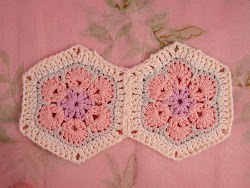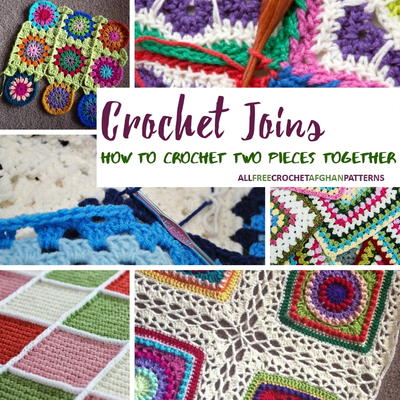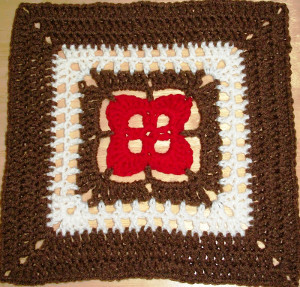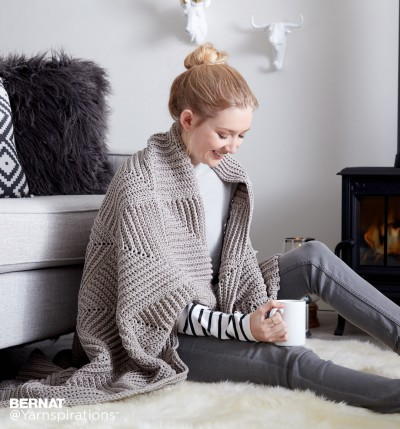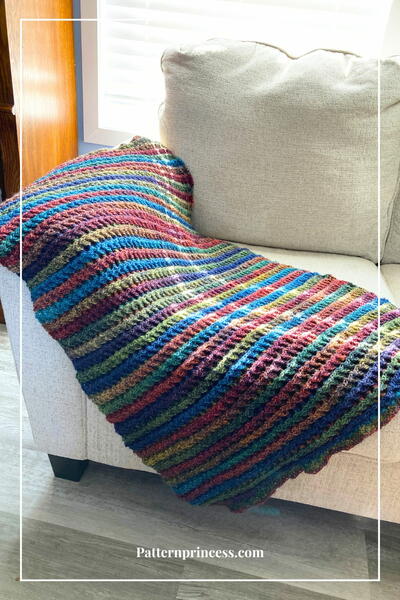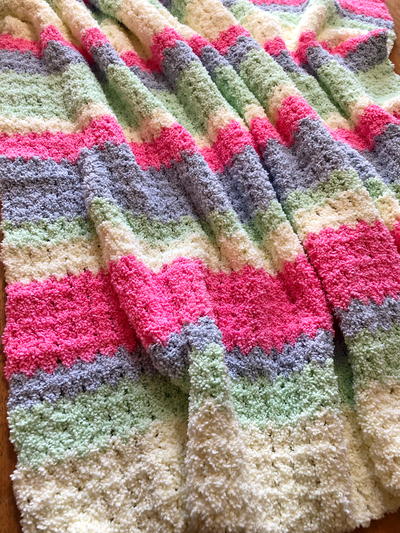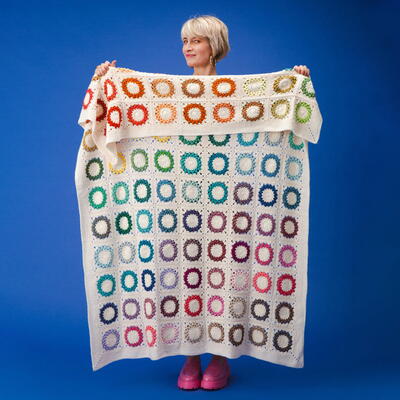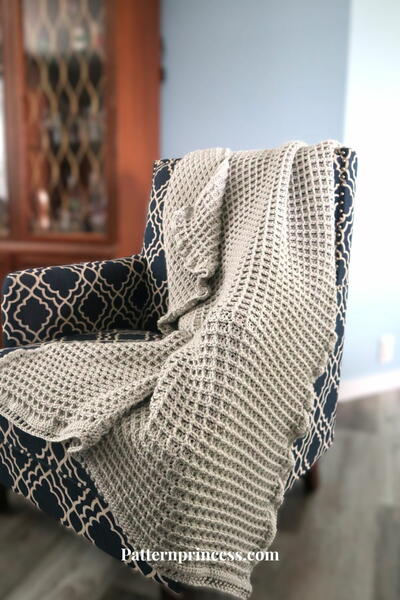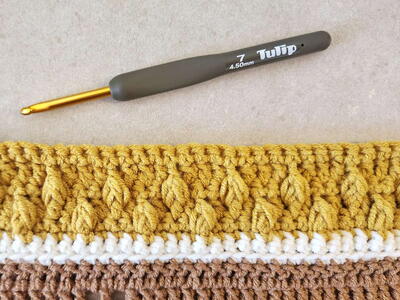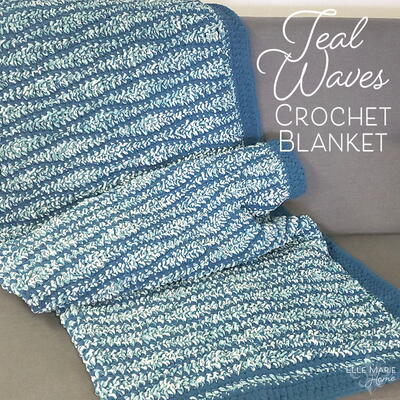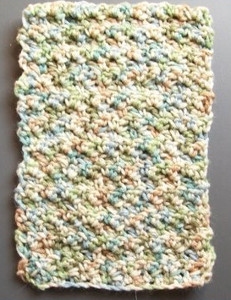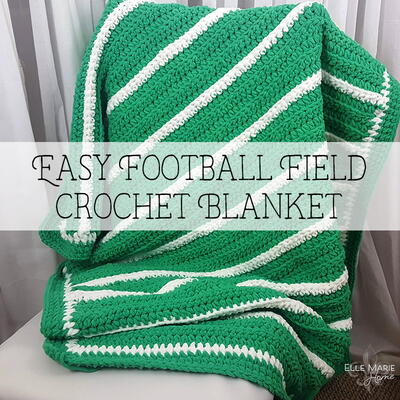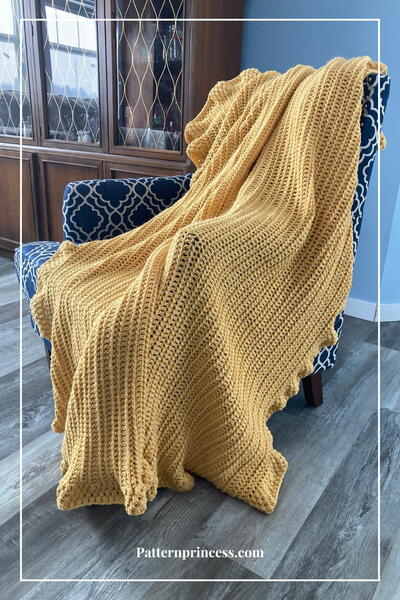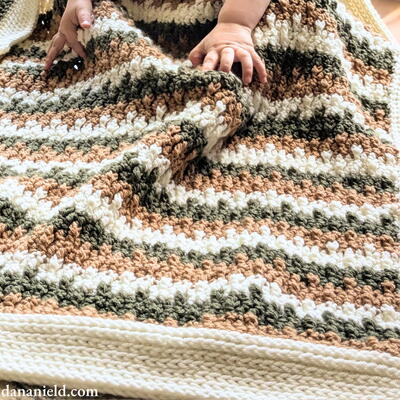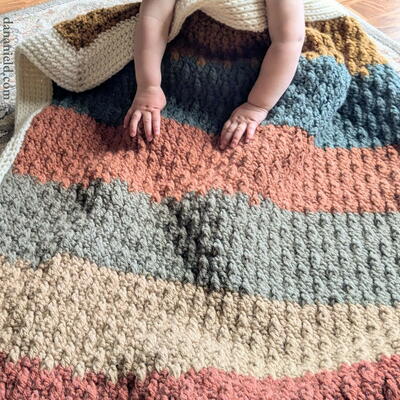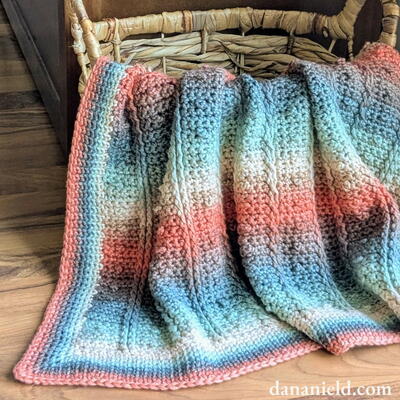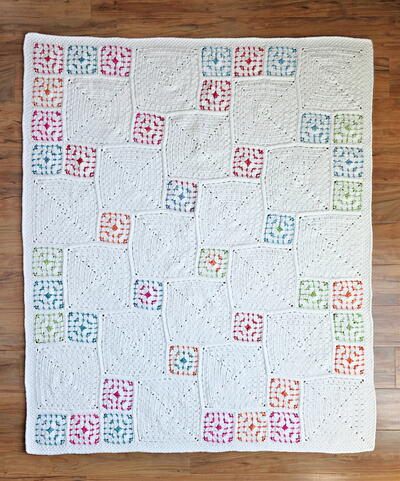Crochet Joins: How to Crochet Two Pieces Together
Learn how to slip stitch crochet and master other crochet seams!
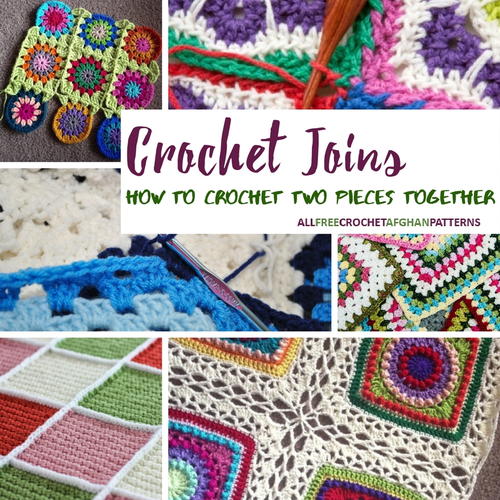
After you complete all of the granny squares for your granny square afghan, it can be easy to lose steam and become apathetic about the way it is put together. After so many hours of crochet labor, you might say, “Just throw them together and be done with it!”
However, the finishing touch of any granny square afghan is the way it is seamed. And, there are nearly as many crochet joins as there are granny square patterns. This means that you have virtually endless options for how your afghan will turn out.
There’s really no way to go wrong with joining granny squares. All of the crochet joins are easy to learn and can look great. It doesn’t matter what you decide to do, except you have to like it! Play around with what you think looks best for your pattern and how you like to seam. That might change from project to project.
In Crochet Joins: How to Crochet Two Pieces Together, you will find step-by-step crochet tutorials on the three most common seaming methods and explanations of even more fun crochet seams. Plus, the end of the article features great projects that use some of these seaming methods. Along the way, you will find encouragement and advice from expert bloggers!
First, though, we have some tips for how to choose a join and things you should consider before you start joining.
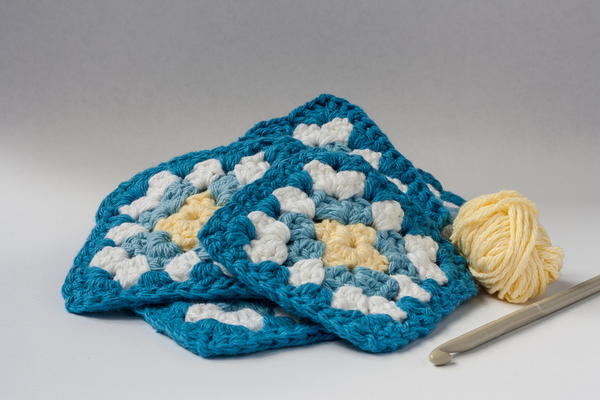
Advice from Experts: 4 Tips for Choosing a Join
1. Think about the vision for your entire project before deciding your crochet join.
“I like to approach joins as I do any crochet project. You first need to understand the requirements of the project, then you go through the steps of determining the correct yarn, the perfect stitch, and the right size hook that will enable you to get to your vision. Picking a join is along the same lines. Each join has their pros and cons. Some are flat and loose, but not invisible. Some are completely hidden in the back of a project, but create a bumpy seam. Some will require a seam allowance, as it eats up some of your crochet fabric. Picking a join will depend on what you want that join to do! Sometimes, the best way to pick is to just try it and see if you like the result!”
—ChiWei from 1dogwoof.com
2. Think about how the pieces will match up to each other.
“When joining pieces that have different stitch counts, like a variety of squares, it's very helpful to pick a lacy joining method! These methods typically involve skipping stitches along each side of the square as you work, and that's where you can "fudge" things a bit to make the squares work together without having to make the stitch counts of each match! Skip an extra stitch, skip one less. Make it work, and make it beautiful!"
–Tamara from mooglyblog.com
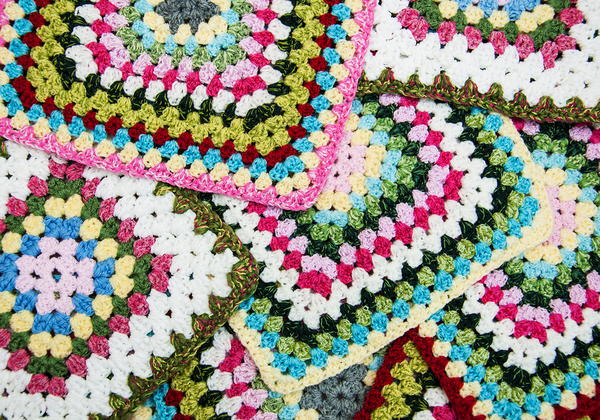
3. Think about how the crochet project will be used.
“When I'm choosing a join for a project, I think about how it is going to be used. For baby blankets, which get heavier use than most other blankets and have additional safety issues, I prefer very strong seams, like the slip stitch. For blankets for adults, I'm more likely to choose a join that is decorative or that fits best with the rest of the project.”
–Marie from undergroundcrafer.com
4. Think ahead before deciding your crochet join.
“My best advice for those who are just starting to learn these new techniques would be to set yourself up for success by double checking stitch counts on squares, or making sure to do a "test square" to see if any adjustments need to be made. This little planning session will stop you from frogging—or fudging!—later, and will leave you with the perfect join for your piece. The joining method doesn't have to be an afterthought. It can be a beautiful focal point.”
–Rachele from cypresstextiles.net
7 Important Steps Before You Begin
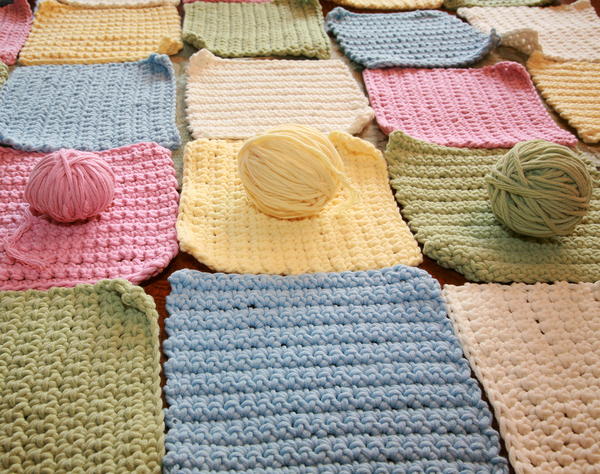
1. Be sure you know exactly which pieces are being joined to each other. Lay out your pieces before you begin to avoid mistakes.
2. Choose yarn that is the same weight as your project. This will make it easier to complete the crochet seam and will help the join blend in, especially when weaving in your ends.
3. Choose yarn in a color that will have the effect you want. If you want it to blend in with your pieces, choose a color that will do so. If you want it to be an extra design addition to your pattern, choose a color that contrasts your pieces.
4. Decide if you want to put right or wrong sides together as you seam. For some patterns, it might make sense to instead put wrong sides together and go through all four loops to create a raised border around the squares on the right side.
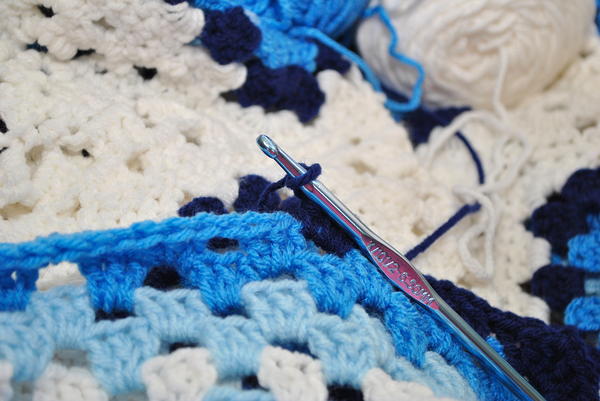
5. Consider lining up and pinning your pieces. It can be helpful to pin the pieces together before seaming to make sure you are seaming evenly. Kristi from kristisimpson.com “would recommend that you use stitch markers to line up your work throughout. This will keep you from having to re-measure, needing an extra 2 sets of hands, and having to realign your work as you go!”
6. Decide if you want to go through two loops of each stitch or just one. In general, going through both loops of each stitch will make your join stronger, but it will also make it bulkier and more visible. People seem to be split over which way is better, but again, it all depends on what you want and like.
7. Be Confident!
“As I first learned to crochet, I ventured into projects that didn't need joining or seaming because I didn't want to mess up my work. But as I learned how to seam, it was so easy that I was confident to try new things! Really, why did I wait!?!?”
–Kristi from kristisimpson.com
Tutorials for Common Crochet Joins
This video tutorial by Kristi Simpson for AllFreeCrochetAfghanPatterns.com walks through the most common crochet joins: whip stitch, mattress stitch, and slip stitch. Below the video are three written tutorials of the same joins in case you need to look back at a step. Keep reading after for more beautiful joins and projects!
Whip Stitch Crochet Join
The whip stitch gets its name from the broad motions you make when completing this stitch. The join is easy to learn and fairly mindless once you get the hang of it. For this join, you will need a yarn needle because it is sewn rather than hooked.
“My favorite join is the whip stitch. It can be used in many different ways, from seaming to adding drama to any piece with a contrasting color...and it's so easy!”
–Kristi from kristisimpson.com
1. Decide what loops you will stitch through, and decide if you will do right or wrong sides together. It is up to you, but be consistent whatever you choose.
2. Thread your needle with yarn. You will need enough to complete the entire seam between your pieces, plus some to leave as tails.
3. After matching up your pieces, insert your needle into the corner stitch of the square furthest from you, going away from you. Pull your yarn through the stitch until you have at least a six-inch tail for weaving in later.
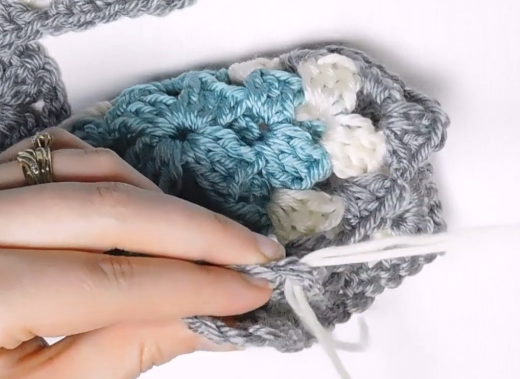
4. Insert your needle into the corner stitch of the square closest to you in the SAME direction as with the other square, then continue into the stitch you just went through on the furthest square in the SAME direction. This step is to make the end of the joining yarn a bit more secure.
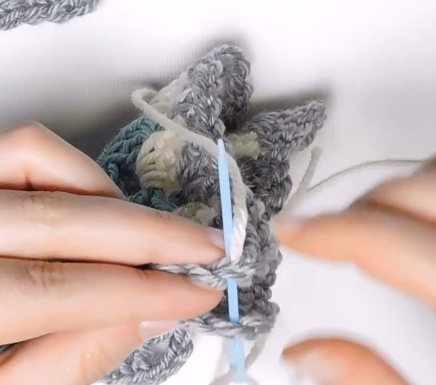
5. Insert your needle into the next stitches, going in the SAME direction as the first time, first the closest square to you, then the furthest. Pull the yarn through until it is just tight. You still want a bit of flexibility in the join. It will now look like the photo below.
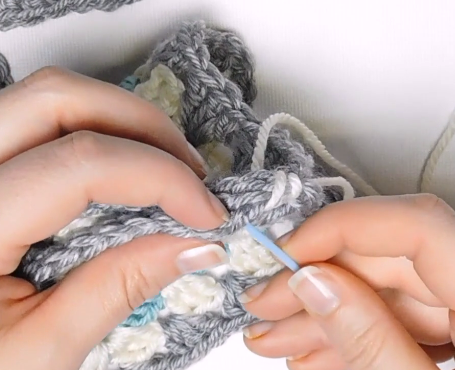
6. Repeat the last step in each set of stitches along the entire length of your pieces. You will end up with something like the picture below along the entire length.
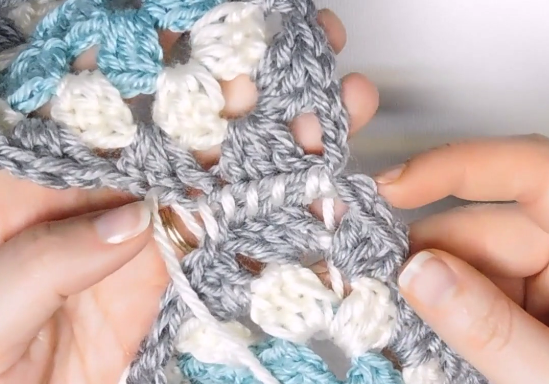
7. When you complete the final stitch, either cut the yarn and weave in the ends or continue to the next seam in your project.
Mattress Stitch Crochet Join
The mattress stitch join is the most invisible of the three most common joins, the joining yarn disappearing within the stitches. This is especially true if it is made in the same color yarn. This method is also great when you need to know how to join corner to corner afghan squares, because mattress stitch works well with single or double crochet stitch “V’s” along the edge. For this join, you will need a yarn needle because it is sewn rather than hooked.
“I love using the mattress stitch! I use the mattress stitch all the time because it results in a flat join and is almost always invisible.”
–ChiWei from 1dogwoof.com
1. Decide what loops you will stitch through, and decide if you will do right or wrong sides together. It is up to you, but be consistent whatever you choose.
2. Thread your needle with yarn. You will need enough to complete the seam on your squares, plus some for tails you will weave in later.
3. After matching up your pieces, insert your needle into the corner stitch of the square furthest from you, going away from you. Pull your yarn through the stitch until you have at least a six-inch tail for weaving in later.
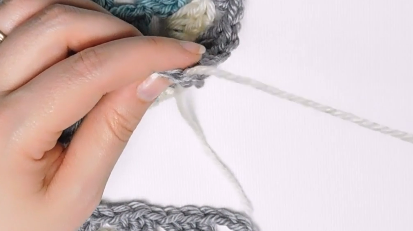
4. Insert your needle into the next stitch of the square furthest from you, coming towards you this time. Continue into the second stitch of the square closest to you.
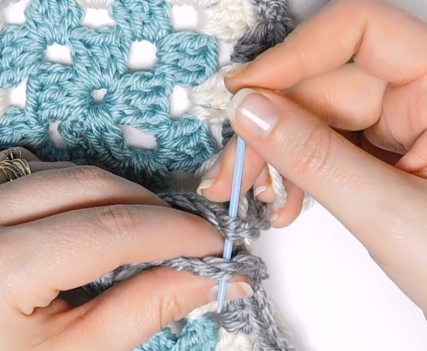
5. Insert your needle into the next stitches, going away from you this time.
6. Repeat this alternating pattern of towards and away from you in steps 4 and 5 along the entire length of your pieces. You will end up with something like the picture below along the entire edge. See, you can’t even tell where it was seamed!
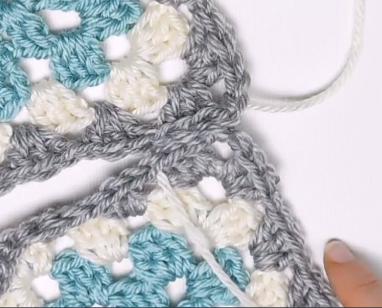
7. When you complete the final stitch, either cut the yarn and weave in the ends or continue to the next seam in your project.
Slip Stitch Crochet Join
The slip stitch join is just what it sounds like—using the simple slip stitch to join together your crochet pieces. When you join using slip stitch with right sides together, this join is nearly invisible. It is an asymmetrical join, meaning each side of the join looks different, so do keep that in mind if you decide to join with wrong sides together. If you do not know how to slip stitch crochet, check out this How to Slip Stitch Crochet tutorial before you begin the join.
1. Decide what loops you will stitch through, and decide if you will do right or wrong sides together. It is up to you, but be consistent whatever you choose.
2. Make a slip knot in your joining yarn, leaving a tail to weave in later. Learn how to make a slip knot here.
3. Insert your hook into the corner stitch of one of your squares and draw the slip knot through the stitch.
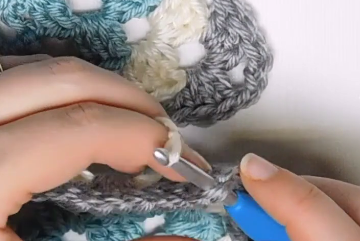
4. Insert your hook into the corner stitch of the other square and hook a loop of your joining yarn, pulling it though both the stitch and the loop on the hook.
5. Insert your hook into the loops of the next stitch of each crochet square. Keep your yarn underneath your work and only bring it up to loop the hook. Hook a loop of joining yarn (pictured below) and pull through both stitches and the loop on the hook.
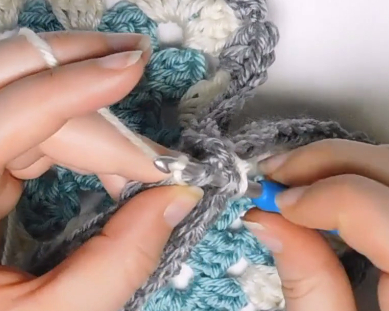
6. Repeat the last step in each set of stitches along the entire length of your pieces. You will end up with something like the picture below extended along your seam, the slip stitches showing up on the right.
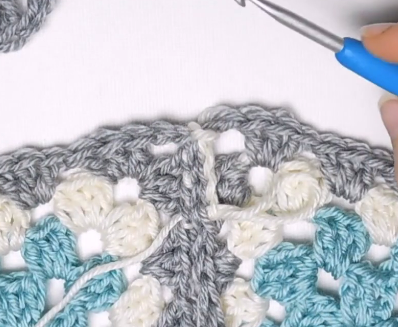
7. When you complete your final stitch, either cut your yarn, bring the tail through the final loop to knot, and weave in ends or continue to the next seam in your project.
More Great Crochet Seams
There are also some fancier ways of joining crochet pieces that actually add to the pattern as a whole. These ways of joining granny squares are just as easy as the more common joins, but they serve a whole different purpose.
The Tight Braid Crochet Join creates one row of new crochet work in addition to the braided join as you go between pieces. This join creates a nice, textured braid when used to join pieces of the same color, but can also look beautiful with intertwining colors, making it a very universal join. The pieces stay tight to one another, while still having an extra decorative flair. Tamara from mooglyblog.com has a wonderful Tight Braid Crochet Join Tutorial.
The single crochet join makes a nice ridge along the right side of the fabric, so if that’s something you are looking for, this seam is for you. Plus, it is a very repetitive join of single crochet stitches, so once you get going, it goes very fast. Sarah from repeatcrafterme.com has an amazing tutorial for How to Join Granny Squares with the single crochet join.
A lacy seam can be the right seam for you if you want something that will become an important part of the pattern, rather than just a way of joining. Sandra from Sandra-cherryheart.blogspot.co.uk has a beautiful tutorial for a Lovely Lacy Joining pattern that adds elegance to any project, no matter how simple.
The Celtic Lace Join takes lace patterns to a whole new level with cascading rows of openwork. In order to get the intertwining chains between the squares, you join the edging to the neighbor motif as you go. The Celtic Lace Join also expands the size of your project since it is a thick edging and join, so you get more afghan for each square made. This join really adds elegance to your final projects. If you want a Celtic Lace Join Tutorial, Rachele from cypresstextiles.net is here to help!
Of course, there’s also the choice to have no need for seams at all! For many motif projects, you can use join as you go crochet. In join as you go crochet, rather than completing all of your crochet pieces and then joining them together, you work each piece until its final round and then join the pieces together as you make that last round. Pretty simple, and pretty universal.
There are two ways to work join as you go crochet: as you complete each motif or after each motif is to the final round. Heidi from heidibearscreative.blogspot.com has an African Flower Hexagon join as you go tutorial for the first way, and Rachele from cypresstextiles.com has a great Join As You Go Crochet Tutorial for the second way.
“Continuous join as you go is like if you laid out all your motifs and drew a line around all of them in order, without picking up your pencil. This is the special path you take when you join continuously. Once you figure out what to do at the corners, any join as you go method can be morphed into a continuous join!”
–Rachele from cypresstextiles.net
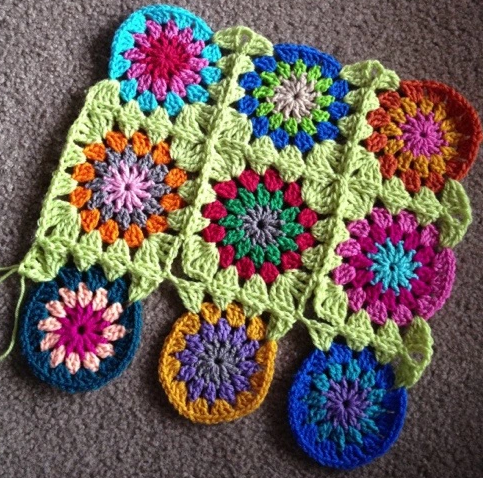
Susan from feltedbutton.com LOVES the join as you go crochet method. Here are her thoughts:
“While sometimes joining by hand gives just the right effect, my all-time favorite method is join as you go. I use this technique in the majority of my designs. When ‘it is done, it is done,’ there are fewer ends to weave as you finish off your motifs, and there are several designs that only look ‘right’ when joined-as-you-go. Plus, the edges of the motifs can really do some magical things as they connect one to another!”
Crochet Weave in Ends
Before we get to great patterns using each of these joins, we should touch on the final step of the seaming process: weaving in ends. It can be tempting to want to get this step over with as quickly as possible, but going too fast can make your project look sloppy or your ends come loose. This video tutorial walks you through the steps of weaving in your ends so they are invisible and secure. Whether your pattern was made in a single color, or you got a lot of practice joining yarn in crochet, this video will give you helpful advice.
Projects Using Your New Crochet Seaming Skills
Sandy Dunes Baby Blanket Crochet Pattern: Slip Stitch Join
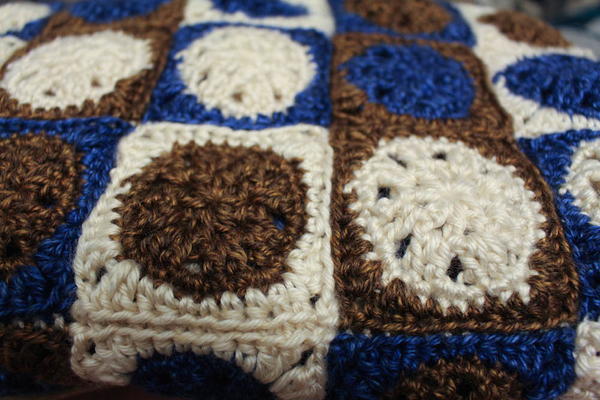
Crochet Refreshing Throw: Whip Stitch Join
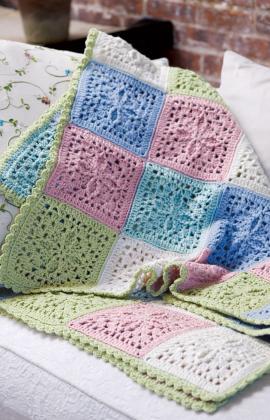
Big Hug Square Crochet Blanket: Whip Stitch Join
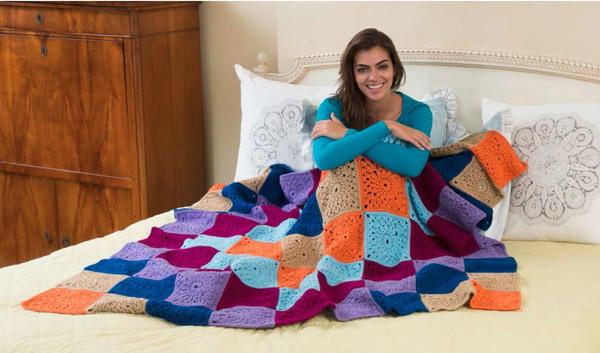
Patchwork Zoodiacs Crochet Afghan: Mattress Stitch Join
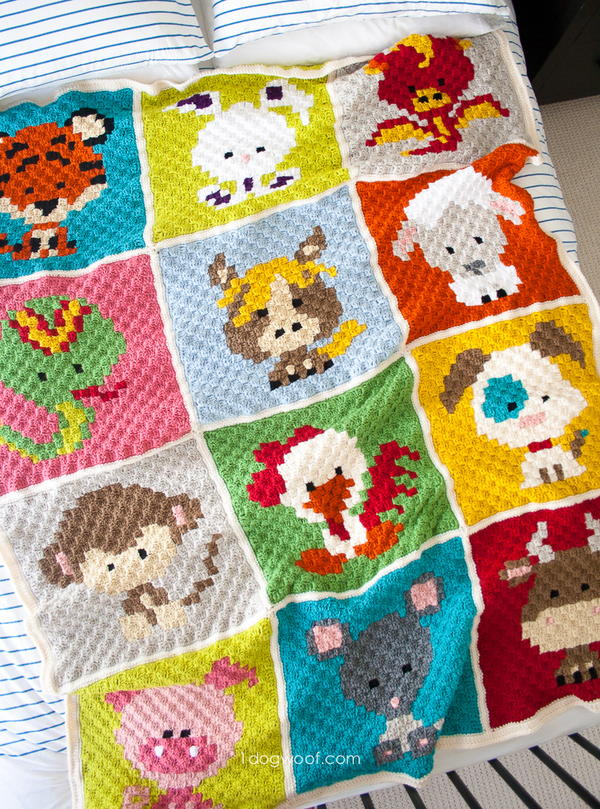
Magic Rainbow Crochet Baby Blanket: Tight Braid Join
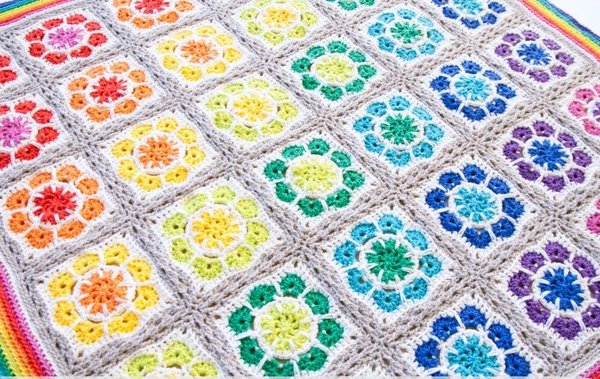
Happy Harlequin Crochet Afghan: Join As You Go
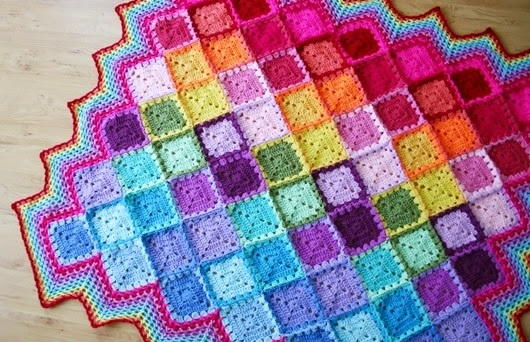
And if all this talk of seaming has made you tired… Here are two seamless granny square afghan patterns!
Weekend Wonder Giant Granny Square Throw
Seamless Granny Square Afghan
Do you have any tips for joining granny squares?
Read NextTeal Waves Crochet Blanket
Your Recently Viewed Projects
Beans
Sep 04, 2017
Wow, I'm so excited to begin my crochetting career. This website will really help me get going. Wow.
Report Inappropriate Comment
Are you sure you would like to report this comment? It will be flagged for our moderators to take action.
Thank you for taking the time to improve the content on our site.

